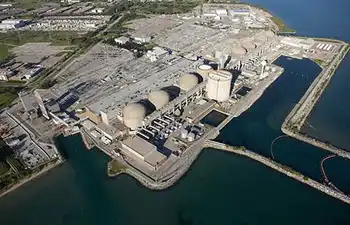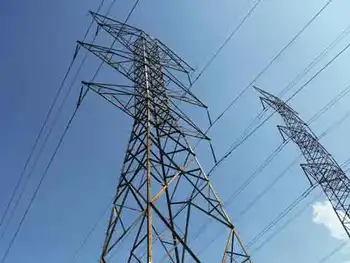Japan harnesses the rising sun
TOKYO, JAPAN - Avoiding solar panels in Japan is simply impossible. Whether in the city glued to the side of a multibillion-dollar firm, or arranged in an array in the countryside, they are everywhere. In the long line of fads to wreak havoc in Japan, this one seems to have staying power.
Japan is the world's fourth-largest energy consumer, which is somewhat surprising as the country's population of 120 million makes up only 2.1 of the world's population. The island nation is poor in energy-generating resources, and the majority of its largest energy sources, oil and coal, are imported and account for 60 of the country's total energy.
In 1974, the Sunshine Project, designed to ease Japan's dependence on petroleum, came into being. The Sunshine Project was renewed in 1993 and became the New Sunshine Project NSS, dedicated to discovering renewable energy sources.
NSS helped promote the federally funded Residential Photovoltaic PV System, which began in 1994. Between 1994 and 2005, the program provided funds for the installation of 930 megawatts MW of PV power in more than 250,000 homes. Household manufacturers, such as those primarily concerned with prefabricated homes, offer PV installation in made-to-order catalogue homes. Sekisui Heim, a subsidiary of Sekisui Chemical Company Limited, announced that half of the company's 2005 sales were homes that included solar power generation. This provides customers an alternative to some of the highest electricity rates in the world, while generating extra income by selling the excess energy to electrical companies.
According to the European Photovoltaic Industry Association, large plants owned by electrical companies are beginning to complement the residential market. Japan has set high goals by 2020, it plans to have 28 gigawatts GW of solar energy installed and 53 GW installed by 2030. Several companies, such as Kansai Electric Power Company Limited, Kyushu Electric Power Company Incorporated, and Tokyo Electric Power Company Incorporated TEPCO seem to be pushing for these goals via the installation of PV.
In the Osaka prefecture, Kansai, along with Sharp Corporation, is about to break ground on a new $150 million solar plant in Sakai, about 400 kilometers west of Tokyo. Once completed and operational next May, the plant is expected to produce 10 MW for the region.
Currently, Kyuden is constructing two solar power plants in Nagasaki prefecture, about 900 kilometers southwest of Tokyo one plant will be located in the city of Sasebo and the other in the city of Omura. Construction of the $50 million, 20-MW Sasebo plant, which is set to kick off in June 2013, is scheduled for completion in October 2014. In March 2014, construction on the $90 million Omura plant is scheduled to begin, and once completed, the plant is expected to provide 10 MW for the grid.
TEPCO, with at least three projects on the books, seems to be the busiest two projects are set for the Kanagawa prefecture, and one project is under way in the Yamanashi prefecture. The $18 million Yamanashi project, which broke ground in April in Kofu City, about 125 kilometers west of Tokyo, is scheduled to be completed in March of next year and, once operational, will provide 5 MW of renewable energy to the regional grid. An $18 million expansion for an additional 5 MW is set to begin construction in April 2013.
In the Ohgishima district of Kawasaki, Kanagawa, just south of Tokyo, TEPCO will team up with Hitachi Asia Limited-Philippines, a subsidiary of Hitachi Limited and Kyocera Corporation, in June to begin construction on a new $20 million solar power plant. Once operations start in August, the plant is expected to produce 13 MW for the Kawasaki area. At the Ukishima First Waste Landfill in Kawasaki, TEPCO and Toshiba Solutions Corporation, a subsidiary of Toshiba Corporation, plans to begin construction of a $15 million plant in 2011. This plant will provide an additional 13 MW to Kawasaki City when completed in 2012.
Japan has launched itself full-throttle into the eco-craze and is determined to reduce CO2 emissions and increase the total use of renewable energy, which is currently hovering around 1.3. Needless to say, the country is gaining solid ground in solar power production, both in the residential and private company sectors, and is poised to become a world leader in solar power generation.
Related News

Tesla reduces Solar + home battery pricing following California blackouts
LOS ANGELES - Pacific Gas & Electric’s (PG&E) shutoff of electric supply to residents in California’s Bay Area has caught the attention of Tesla and SpaceX CEO Elon Musk, who has announced that he would be offering a price reduction of approximately 10% for a solar panel and Tesla Powerwall battery installation. The discount will be available to anyone interested in powering their homes with solar energy, not just the 800,000 affected homes in the Bay Area.
After initially tweeting a link to Tesla’s Solar page on Tesla.com, Musk added that he would be offering a “~10% price reduction” in installation…




